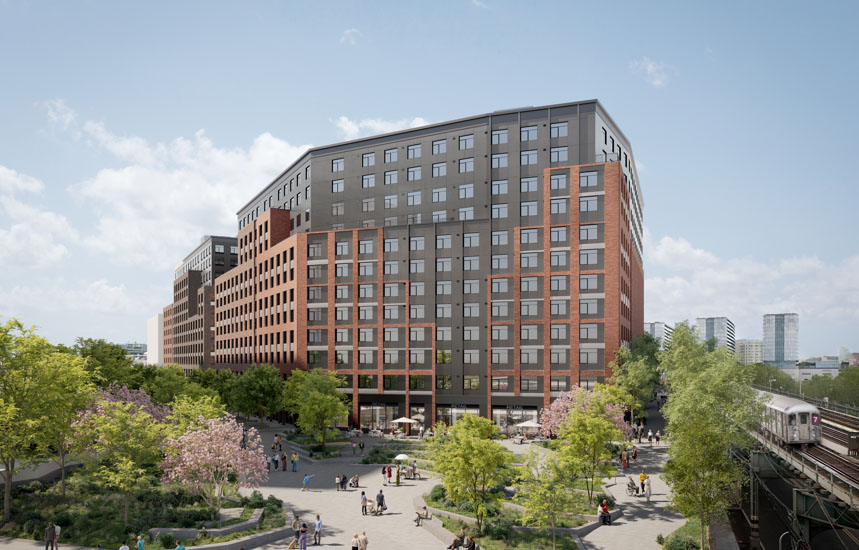Major victories for New York building owners dramatically preserve building’s value - by Saul Bruh
Tishman Speyer v. Roberts, a seminal decision issued by New York’s Court of Appeals in 2010, radically transformed New York real estate law. The decision reversed the uniform interpretation of the high rent/high income deregulation provisions of the Rent Stabilization Law. The post-Roberts interpretation forbade high rent/high income deregulation for rental units whose owners were receiving J-51 tax abatement benefits. While these changes in the law heavily burdened New York building owners, perhaps the most troubling was the fact that these changes could be retroactively applied to units that were legally deregulated based on the past interpretation of the law. While Roberts has presented numerous issues for building owners since 2010, several recent decisions limit the retroactive impact that Roberts has on building owners.
Following the issuance of Roberts, building owners contacted Kucker & Bruh, LLP to determine how to respond to the changes in the law. The owners’ attorneys conducted due diligence by analyzing each rental unit’s lease, the J-51 expiration dates, the language of the Roberts decision, and the Division of Housing and Community Renewal’s (DHCR) rent registrations in order to determine which tenants were entitled to rent refunds. Following this analysis, the building owners were advised to tender rent refunds and to register certain units as stabilized in order to avoid larger treble damages and overcharge claims. Despite the landlord’s preventative measures, four tenants filed such claims. The claims were tried together before a referee appointed by Justice Joan Kenney.
These claims initiated grueling trials that would last for six years. Each tenant sought nearly a million dollars in overcharges while the building owners argued that because they had issued rent refunds, the tenants had already been awarded the amounts they were entitled to. Special Referee Helewitz agreed with the building owners and issued favorable reports and recommendations for building owners in all four cases. He found that the owners had committed no wrongdoing and that any overcharges resulted from their reasonable reliance on the previous interpretation of the high rent deregulation statute. Additionally, the owners’ decision to issue rent refunds was confirmed to be correct when the court awarded the tenants the identical refund amounts that had been tendered by the owners six years before.
In Todres v. W7879, the Appellate Division also issued a favorable decision for these same building owners. Another tenant who was refunded immediately following Roberts claimed that she was entitled to a larger overcharge amount. Supreme Court Justice Arthur Engoron found that while the building owners were not guilty of fraud, in order to calculate the overcharge it was appropriate to consider “the rental history of the housing accommodation prior to the four year period immediately preceding the commencement of the action.” On appeal from the trial court’s decision, the owners argued that when determining the amount of overcharges, it is only appropriate to go beyond the prescribed statute of limitations when a party has been defrauded. In Todres it was improper to examine the rental history prior to the four year period because Justice Engoron held that the tenant had not been defrauded. The Appellate Division agreed and modified the trial court’s decision and ruled that the lawful stabilized rent was limited to the four year period prior to the assertion of overcharge claims by the tenant. Todres represents the first post-Roberts case in which the Appellate Division determined that an owner’s actions were protected by the four year statute of limitations. The Appellate Division also reversed the lower court’s award of treble damages. Like the four cases recently decided by Justice Kenney, the Appellate Division awarded the tenant the same amount the owners had refunded six years prior.
Following the initial due diligence that was conducted for each deregulated rental unit, the owners’ attorneys found that due to each unit’s unique circumstances, not every tenant whose unit had been deregulated was entitled to a rent refund. In Masten v. W7879, a case that reached the Court of Appeals, one such tenant was not tendered a rent refund because his apartment had been deregulated by a DHCR administrative order ten years prior to the issuance of Roberts. However, following the Roberts decision, this tenant attempted to jump on the post-Roberts bandwagon and claimed that his apartment was to be re-regulated by operation of law. While the tenant commenced a lawsuit following the Roberts decision, the tenant failed to exhaust any of the legal remedies available to him at the time of deregulation.
Because the apartment was deregulated by an administrative order that was never appealed, the owners argued that the order must be binding and that raising this new argument ten years later was too late despite the later issuance of the Roberts decision. The Court of Appeals agreed that there was no basis for the tenant’s claimed re-regulation and affirmed the Appellate Division’s ruling in the owner’s favor.
While the retroactive impact of Roberts has burdened building owners since 2010, these six decisions issued in March and April are crucial because they demonstrate that there are indeed limits to the negative impact the Roberts decision could have on New York’s building owners. In all six of these cases, Kucker & Bruh, LLP’s due diligence reviews of the building’s leases, rent rolls, and the J-51 expiration dates, coupled with their knowledge of New York’s Rent Stabilization Law enabled the building owners to respond correctly to the changes in the law, save hundreds of thousands of dollars in tenant overcharge claims, and dramatically preserve the building’s overall value.
The building owners in all six cases were represented by Saul Bruh, James Marino, and Robert Berman of Kucker & Bruh, LLP.
Saul Bruh, Esq., a founding partner, with assistance provided by Valerie Young, a paralegal at Kucker & Bruh, LLP, New York, N.Y.
Related Cos. and Sterling Equities open housing lottery for Willets Point Commons


The CRE content gap: Why owners and brokers need better digital narratives in 2026 - by Kimberly Zar Bloorian








.gif)

.gif)
.jpg)
.gif)